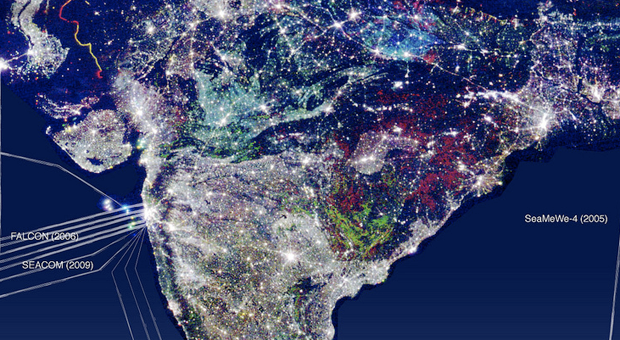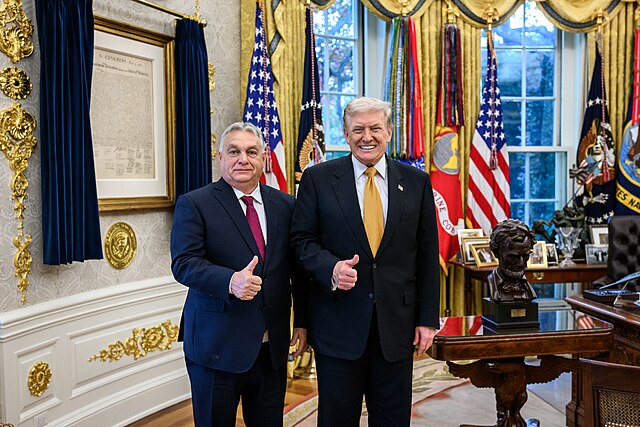
India was among the few governments that did not sign the NETmundial outcome statement. But why does it seem that the world’s largest democracy is not putting its weight behind a “bottom-up, open, and participatory” multistakeholder process?
In his address to the NETmundial gathering, Vinay Kwatra, the official Indian representative said, “We recognize the important role that various stakeholders play in the cyber domain, and welcome involvement of all legitimate stakeholders in the deliberative and decision making process. Internet is used for transactions of core economic, civil and defence assets at national level and in the process, countries are placing their core national security interests in this medium. Now with such expansive coverage of States’ activities through the internet, the role of the governments in the Internet governance, of course in close collaboration and consultation with other stakeholders is an imperative.”
The message was clear. The internet has a large role to play in India’s national policy goals, and to that end, a global internet governance ecosystem has to be managed, at the international level, by multilateral mechanisms.
India has over 200 million Internet users — with about 52 million subscriptions — over 900 million mobile telephone subscribers. These numbers are only going to grow. Kwatra, continuing his address, added that, “On our part, however, we would have liked to some of important principles and ideas, highlighted by us and many other countries reflected in the draft outcome document… (we) look forward to constructively engaging with other delegations in collectively contribute to making the Internet open, dynamic and secure, and its governance balanced between rights and responsibilities of all its stakeholders.” (sic)
Kwatra was speaking, of course, at NETmundial, dubbed the “world cup of internet governance.” Held in Sao Paolo, Brazil, on April 23-24, 2014, the conference was announced by Brazil President Dilma Rousseff. The entire chain of events can be traced back to the revelations by Edward Snowden that the US’s National Security Agency had been spying on its own citizens and other countries alike, including the personal communication of President Rousseff. In a heated statement at the UN General Assembly in September 2013, she called for the UN to oversee a new global legal system to govern the internet. She said such multilateral mechanisms should guarantee the “freedom of expression, privacy of the individual and respect for human rights” and the “neutrality of the network, guided only by technical and ethical criteria, rendering it inadmissible to restrict it for political, commercial, religious or any other purposes.
Soon, after a brief consultation with Fadi Chehade in October 2013, the head of ICANN — Internet Corporation for Assigned Names and Numbers – an organization thatcoordinates the Internet’s global domain name system, the dates of NETmundial was announced. And to add expectation to the event, in March 2014, the the U.S. Commerce Department’s National Telecommunications and Information Administration (NTIA) announced its intent to transition key internet domain name functions to the global multistakeholder community. It clarified that it would not hand over ICANN to any government-led body. Suddenly, NETmundial gained weight as it was to be the next international forum where the future of internet governance was to be debated – and now one of the organizations government a part of the internet was in play. A far cry from what President Rousseff had suggested in the UN General Assembly, instead of talking about an international legal regime to govern cyberspace, the focus of the meeting turned to multistakeholderism as the way forward in the sphere of internet governance.
The draft outcome statement and the subsequent final outcome state released after the two-day conference is a result of 180 input documents and 1300 comments from over 47 countries, and the work of the 1229 delegates from 97 countries who attended NETmundial. India had an official delegation as well as civil society participants who attended the meeting. In fact, an Indian academic was chosen to co-chair the organizing committee for civil society for the event. Remote participations hubs were set up in cities around the country, including Gurgaon, Chennai and Bangalore. Within the Indian contingent too, as with any large country, there are divergent views on the governance framework to be taken for the internet, with those who support the governments view for multilateralism at the international level and multistakeholderism at home, and those who oppose the official view and encourage an international multistakeholder regime.
The final statement – though non-binding – has squarely put its weight behind multistakeholderism. It talks about protecting the ‘rights that people have offline, must be protected online… in accordance with international human rights legal obligations.’ It also champions cultural and linguist diversity, which was part of India’s official submission to NETmundial. However, when the document starts to tilt towards governance structure is where it diverges from the official Indian position, with language such as – “internet governance institutions and processes should be inclusive and open to all interested stakeholders. Processes, including decision making, should be bottom-up, enabling the full involvement of all stakeholders, in a way that does not disadvantage any category of stakeholder.”
In the crucial area of cyber jurisdiction, it says, ‘It is necessary to strengthen international cooperation on topics such as jurisdiction and law enforcement assistance to promote cybersecurity and prevent cybercrime. Discussions about those frameworks should be held in a multistakeholder manner.’ On surveillance, the most controversial topic from 2013 which prompted the Netmundial meeting in the first place, the document says, ‘Mass and arbitrary surveillance undermines trust in the Internet and trust in the Internet governance ecosystem. Collection and processing of personal data by state and non-state actors should be conducted in accordance with international human rights law. More dialogue is needed on this topic at the international level using forums like the Human Rights Council and IGF aiming to develop a common understanding on all the related aspects.’
The reaction to Netmundial has been varied, depending on whom you ask. There are those who have hailed it as a first positive step towards a multistakeholder process, and are encouraged to find that participants found more things to agree on than disagree. The US called it a “huge success”. The European Commission felt Netmundial put it on the “right track.” Many big businesses released statements indicating they were pleased at the outcome. The civil society group at Netmundial expressed ‘deep disappointment’ that the outcome statement did not address key concerns like surveillance and net neutrality. Others commentators hailed it a big success for big business as it was able to ‘grab the ball on three important points: intellectual property; net neutrality; and intermediary liability’.
In a sense, India’s refusal to sign the outcome statement, and instead take back to its stakeholders seems to be completely aligned with its stated view of the internet. If, as documentation suggests, the internet is being viewed by India as not merely an open, free, global commons that should remain untouched by any major governmental control, but instead a resource that needs to reflect the values of an ‘equinet’ – a platform for commerce, e-governance, national security mechanism to be achieved through fair playing rules established by a ‘globally acceptable legal regime’ and a ‘new cyber jurisprudence’, then there is a long battle ahead. The official Indian argument does not need to be viewed through the lens that presupposes it wishes to inflict censorship in the manner that an authoritarian government might. The argument must be weighed on the merits of this line of thought – that for Indian netizens, business, and even state surveillance to survive, it must be the government who reflects the national interest in international platforms, after having consulted stakeholders back home.
It certainly seems that the weight and development of a billion people sits heavy on the shoulders of the Indian government. The question is: does it need to lead them to the world wide web, or can they find it themselves?
This article was posted on May 1, 2014 at indexoncensorship.org




